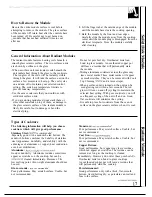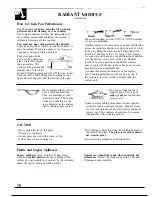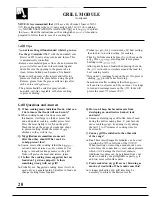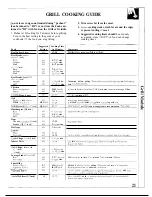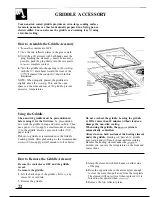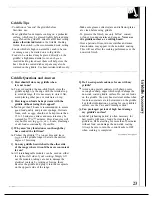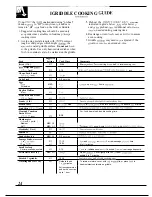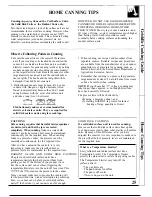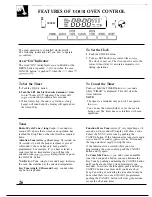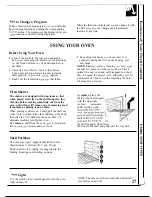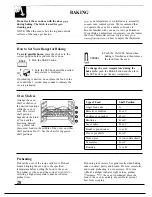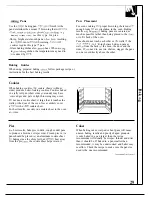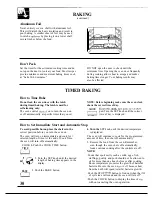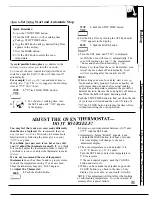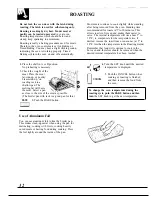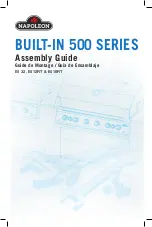
How to Remove the Module
Be sure the entire module surface is cool before
1. Lift the finger tab at the outside edge of the module
attempting to remove the module. The glass surface
until the module base clears the cooktop opening.
of the module
retain heat after the controls have
been turned off. Be careful not to get burned on
2. Hold the module by the front and rear edges.
Carefully slide the module away from the cooktop
module that has not had sufficient time to cool
after use.
center until the module plug is disengaged from the
electrical receptacle. Store the module carefully
after cleaning.
General Information About Radiant Modules
The radiant module features heating coils beneath a
smooth glass ceramic surface. The two surfaces units
are shown by outlines on the glass.
●
When a surface unit is activated, coils beneath the
unit radiate heat through the glass to the cookware.
The red glow of the coils will be instantly visible
through the glass. It will take the surface unit on the
surface a few moments to heat up. The coil cycles
on and and off to maintain your selected control
setting. The coils have temperature limiters to
prevent runaway temperatures.
●
Use the same cookware that you would use with
solid disk surface units.
●
If you are storing modules, do not stack them or
store other materials on top of them, as damage to
the glass ceramic surface of the radiant module is
likely. Be careful not to damage or bend the
electrical plug.
●
Do not let pots boil dry. Overheated metal can
bond to glass module. An overheated copper pot
will leave a residue that will permanently stain
the module.
●
Sliding aluminum cookware across the glass may
leave metal marks. These metal marks will appear
as small scratches. They can be removed with Cook
Top Cleaning
and a razor scraper.
●
When a surface unit is turned on, the unit can be
seen glowing red within a few seconds. The red
glow will turn on and off (cycling) to maintain the
selected heat setting. With poor cookware, you will
see frequent cycling of the unit off and on. Good,
flat cookware will minimize the cycling.
●
It is safe to place hot cookware from the oven or
surface on the glass ceramic surface when it is cool.
Types of Cookware
The following information will help you choose
cookware which will give good performance.
Stainless Steel:
recommended
Especially good with a sandwich clad bottom. The
sandwich bottom combines the benefits of stainless
steel (appearance, durability, and stability) with the
advantages of aluminum or copper (heat conduction.
even heat distribution).
Aluminum:
Good conductivity. Aluminum residues sometimes
appear as scratches on the cooktop, but can be
if cleaned immediately. Because of its
low melting point, thin weight aluminum should not
be used.
Glass-ceramic:
recommended
Poor performance. May scratch surface. Usable, but
not recommended.
Stoneware:
Poor performance. May scratch surface. Usable, but
not recommended.
Cast Iron:
Poor performance. May scratch surface. Usable, but
not recommended.
Copper Bottom:
Good performance, but copper may leave residues
which can appear as scratches. The residues can be
removed, as long as the cooktop is cleaned
immediately. However, do not let these pots boil
Overheated metal can bond to glass cooktops.
An overheated copper pot will leave a residue that
will permanently stain the cooktop.
Porcelain/enamel:
Good performance only with a thick, flat, smooth
bottom. Avoid boiling dry, as porcelain can melt and
fuse to the surface.















